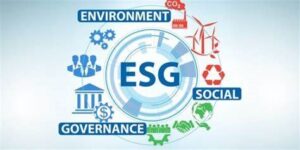The American Society of Heating, Refrigeration and Air Conditioning (ASHRAE) approved for publication of its highly anticipated airborne infection risk mitigation standard for buildings. For those not overly into HVAC, ASHRAE is the governing society responsible for developing building design as well as energy efficiency standards and guidelines for building
The new standard that was enacted, ASHRAE Standard 241, Control of Infectious Aerosols, establishes minimum requirements to reduce the risk of disease transmission by exposure to infectious aerosols in new buildings, existing buildings, and major renovations.
Infectious aerosols are tiny, exhaled particles that can carry disease-causing pathogens and are so small that they can remain in the air for long periods of time and be inhaled. As a building’s HVAC system is designed to recirculate and recondition air, the circulation of pathogens via the air is what the standard is focusing on. Use of this standard is designed to reduce exposure to SARS-COV-2 virus, which causes COVID-19, influenza viruses and other pathogens that cause major personal and economic damage every year.
According to ASHRAE, Standard 241 provides requirements for many aspects of air system design, installation, operation, and maintenance.
Important aspects of the new standard include:
- Infection Risk Management Mode – Requirements of Standard 241 apply during an infection risk management mode (IRMM) that applies during identified periods of elevated risk of disease transmission. AHJs (Authorities Having Jurisdiction) can determine when the enhanced protections of Standard 241 will be required, but its use can also be at the discretion of the owner/operator at other times, for example, during influenza season. This aspect of Standard 241 introduces the concept of resilience – ability to respond to extreme circumstances outside normal conditions – into the realm of indoor air quality control design and operation.
- Requirements for Equivalent Clean Airflow Rate – Other indoor air quality standards, including ASHRAE Standards 62.1, 62.2, specify outdoor airflow rate and filtration requirements to control normal indoor air contaminants. Historically, air flow rates and clean air from the outdoor air was intended to introduce cleaner air from the outside in order to keep the air in the building mixed with outdoor clean air. Standard 241 breaks new ground by setting requirements for equivalent clean airflow rate, the flow rate of pathogen free air flow into occupied areas of a building that would have the same effect as the total of outdoor air, filtration of indoor air, and air disinfection by technologies such as germicidal ultraviolet light. This approach allows the user of the standard flexibility to select combinations of technologies to comply with the standard that best satisfy their economic constraints and energy use goals.
- Requirements for Use of Filtration and Air Cleaning Technology – Dilution of indoor air contaminants by ventilation with outdoor air can be an energy intensive and expensive way to control indoor air quality. Standard 241 provides extensive requirements for use of filtration and air cleaning to effectively and safely achieve meet equivalent clean airflow requirements efficiently and cost effectively. These include testing requirements to establish performance and to demonstrate that operation does not degrade indoor air quality in other ways, for example by elevating ozone levels.
- Planning and Commissioning – Standard 241 provides assessment and planning requirements culminating in the development of a building readiness plan, a concept carried over from the work of the ASHRAE Epidemic Task Force. It also describes procedures for commissioning systems to determine their installed performance.
- “Standard 241 represents a significant step forward in prioritizing indoor air quality,” said 2022-23 ASHRAE President Farooq Mehboob, Fellow ASHRAE. “By implementing the requirements outlined in this standard, we can improve the health, well-being and productivity of building occupants. This standard empowers building owners, operators and professionals to take proactive measures in safeguarding indoor environments. It’s an essential tool for creating healthier indoor environments and promoting sustainable practices.”
The Standard 241 committee will continue and work on improving sections of the standard adding additional requirements, clarifying requirements and developing tools to help the public use the standard. Industry and consumer-friendly resources such as courses, podcasts, factsheets and information events will be introduced in the future.
Green Sprouts. The likely impact to existing and new buildings from this new Standard will require more external air to be brought into the building (i.e., more exterior exchanges of air) or better cleaning of the existing air in the building. Purification of existing air in buildings has not been an area where many building owners have historically focused. The ability to use either or both methods (i.e., more outdoor air intake or purification of the indoor air) to help reduce the spread of disease will surely become the topic of conversation amongst property managers and engineers and will result in return on investment decisions at the property level to determine what works better and what costs more – increasing outdoor airflow and the need to condition that air or purifying that which is already in the building.
Given that COVID-19 is not likely to go away any time soon, Standard 241 which is going to drive technological investments in existing and new buildings and which provides alternative paths to address better air quality in our existing and new building stock should significantly help reduce the spread of disease within the built environment. Tenants should be watching carefully to see how their landlords’ intend to address this key issue and who is paying for it and how.
Duane Morris has an active ESG and Sustainability Team to help organizations and individuals plan, respond to, and execute on your Sustainability and ESG planning and initiatives. For more information, please contact Brad A. Molotsky, David Amerikaner, Joseph West, Sharon Caffrey, Sheila Rafferty-Wiggins, Alice Shanahan, Jeff Hamera, Nanette Heide, Joel Ephross, Jolie-Anne Ansley, Robert Montejo, Seth Cooley, or the attorney in the firm with whom you are regularly in contact.

